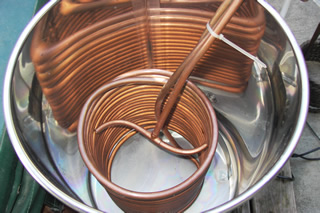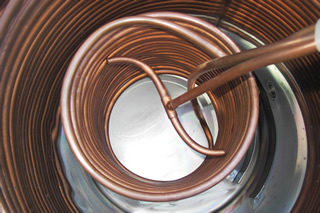Grinder12000
Well-Known Member
Is a spiral really the most efficient shape for a wort chiller? I'm just thinking out loud here because at a meeting we were talking about making a wort chiller and how to bend it.
BUT - is it the best shape? Why not a cone like a top with more longer rings near the top where the warm wort rises. Or why not like a spider web or some other pattern. Is a spiral just a default shape?
BUT - is it the best shape? Why not a cone like a top with more longer rings near the top where the warm wort rises. Or why not like a spider web or some other pattern. Is a spiral just a default shape?



